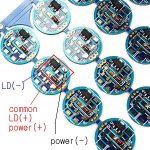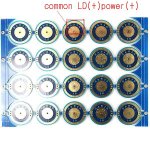So, I bought 3 of these:
Now Im wondering, what should I drive 'em with. IMO, I need both voltage and current regulators.. since I dont have any 2.2 volt batteries around
Best I've seen is those LM317 drivers, but they can regulate only either voltage or current (rright?), so I'd need something to do them both.
Help is requested
Ps. Im new to lazors but I know something about electronics
Pss. I know about the hazards of powerful IR-lasers etc.
Code:
Wavelength : 808±10nm
Power Output : CW 300mW
Working Current(mA) : ≤400mA
Working Voltage(V) : 2.2V
Working Temperature ( ℃ ):-10~+40
Threshold Current (mA):≤120
Beam Divergence (deg): Θ// :17 . Θ⊥38 .
Sealed Size : TO18(5.6mm)
Life span : >10000 hoursNow Im wondering, what should I drive 'em with. IMO, I need both voltage and current regulators.. since I dont have any 2.2 volt batteries around
Best I've seen is those LM317 drivers, but they can regulate only either voltage or current (rright?), so I'd need something to do them both.
Help is requested
Ps. Im new to lazors but I know something about electronics
Pss. I know about the hazards of powerful IR-lasers etc.








